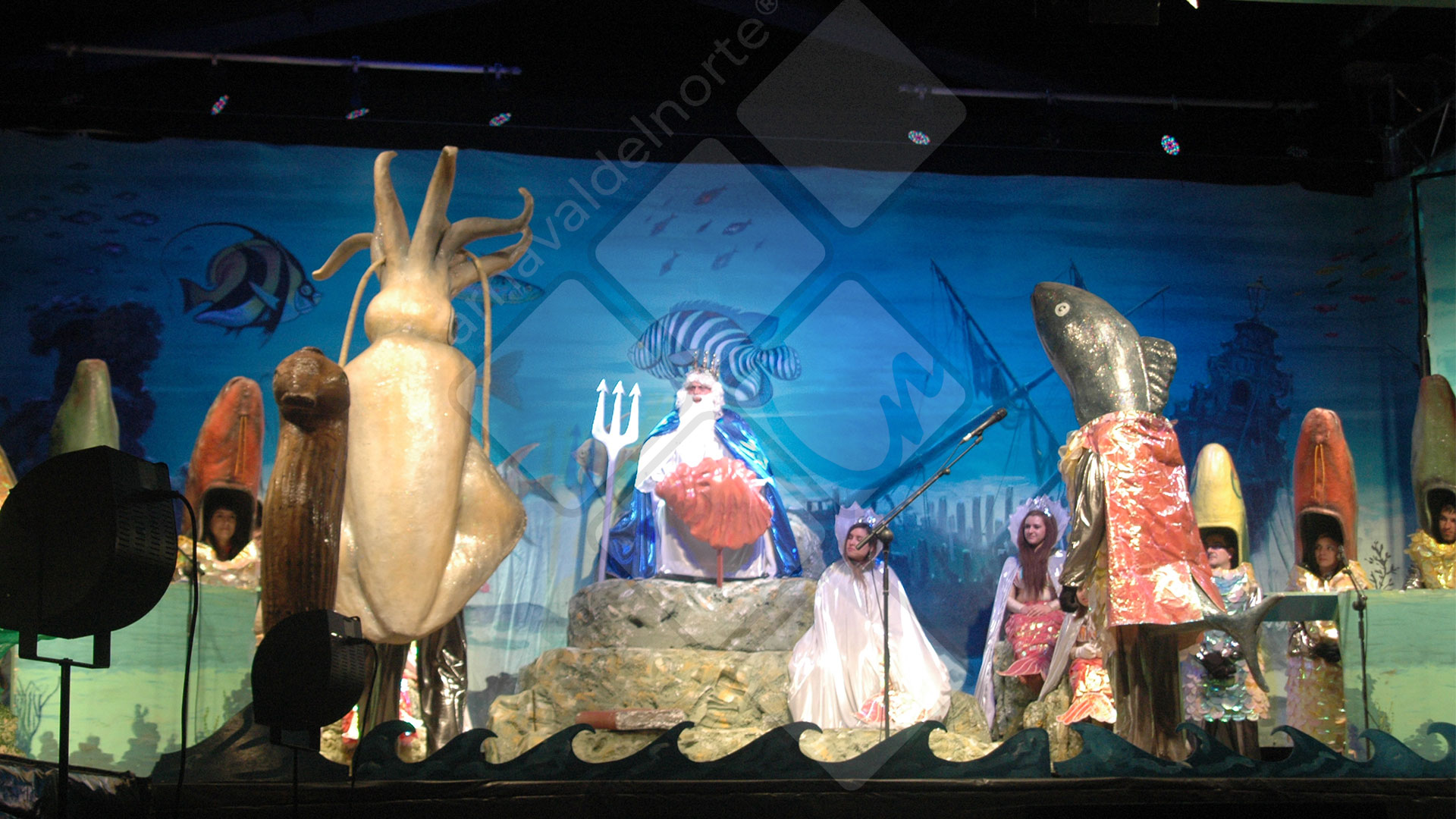The Santoña Carnival wants to once again boast the label of Fiesta of National Tourist Interest. A title it enjoyed until 1993, but which it lost due to a change in the regulations of this classification, which was not detected until 2017. The Plenary has approved in its last session to request again this recognition to the central Government.
The councillors of Tourism and Festivities have put together a complete dossier with documentation in both physical and digital format and published in national and international media, which supports that the colourful event deserves this honorary designation. With the unanimous agreement of the entire municipal corporation, it was agreed to push forward the formal request. The first recipient of the request will be the Regional Ministry of Tourism, which must give its approval to the application and forward it to the Ministry of Tourism.
Once this second step has been taken, there is a period of three months for a decision to be made. If the administrations are agile, it is possible that the Carnaval Marinero 2025 will win back this declaration, which will give the popular festival greater projection and promotion beyond the regional borders.
All the political spokespersons of the Santoña Town Council expressed their certainty that the Carnival of the North ‘more than meets’ the requirements to obtain this declaration. Due to its tradition, history, trajectory, singularity and originality.
The Councillor for Tourism, Sara Lagarma, explained that a multidisciplinary team has worked for eight months on the preparation of the dossier, in which they have had the collaboration of, among others, the Carnaval del Norte Association, the peñas of Los Vinikis and Los Rayitos, as well as neighbours who have wanted to contribute valuable information about the festival, which they treasured in a private capacity. To all this compilation, the councillor pointed out, it has been necessary to add a digital marketing and dissemination plan, which was not previously in place, and which is required by the order.
The mayor, Jesús Gullart, gave voice to the document drawn up with the statement of reasons for receiving the cataloguing. ‘The Santoña Carnival with its roots in 1864 is a unique and vibrant celebration that has overcome historical challenges to become a cultural event of great importance. Its history is a testimony to the resilience of the community that kept the tradition alive, even during periods of prohibition,’ said the councillor, alluding to the times of the Civil War and the Dictatorship, when the locals found other ways to celebrate it with ballroom dancing at the Teatro Casino Liceo or the Santoña song festival in 1968.
The revival of the Carnival in 1981 marked a milestone in the history of the town, driven by the associative movement of the local people. ‘The creation of the Pro-Carnival commission, which integrates the peñas and the town council, has been key to the organisation and success of the festival’.
Trial at the Bottom of the Sea
The originality of the performance, according to the report, lies in the Trial at the Bottom of the Sea, where a mermaid in love with a sea bream faces a satirical trial before being burned in the bay. It is ‘a unique theatrical performance that fuses seafaring tradition with creativity and humour’.
The murgas with their satire and social criticism are another ‘key element’ that encourages citizen participation and artistic expression. ‘They are the soul and voice of the carnival. Their witty and critical lyrics interpreted with talent and humour are a reflection of the local idiosyncrasy and a valuable intangible cultural heritage, which makes them a national reference’.
The carnival is spread over five weekends, offering a wide range of activities for all audiences. The grand parade is another highlight, with the beauty of the costumes. ‘An explosion of colour, music and fantasy that runs through the streets of Santoña. The murgas, comparsas and floats display their creativity and talent in this event’.
The carnival has evolved over the years, extending its duration and incorporating new activities such as days of reflection and cultural events and, more recently, the Day of the Trasmerano, a local event that ‘is becoming more and more popular every year and in which the locals dress up in traditional costumes and recreate scenes from the daily life of yesteryear’.
Among the reasons for deserving this label, reference is also made to the tourist and economic impact of the festival, ‘attracting thousands of visitors from all over Spain and abroad and generating economic income for the community (hotels, commerce and services)’. It is claimed that it ‘promotes sustainable tourism and transmits important cultural values such as citizen participation, creativity and respect for diversity’. The brief concludes by stating that the declaration of Fiesta of National Tourist Interest will contribute ‘to consolidate and enhance this benefit by boosting tourism and economic development in the region’.
Source: El diario Montañes






